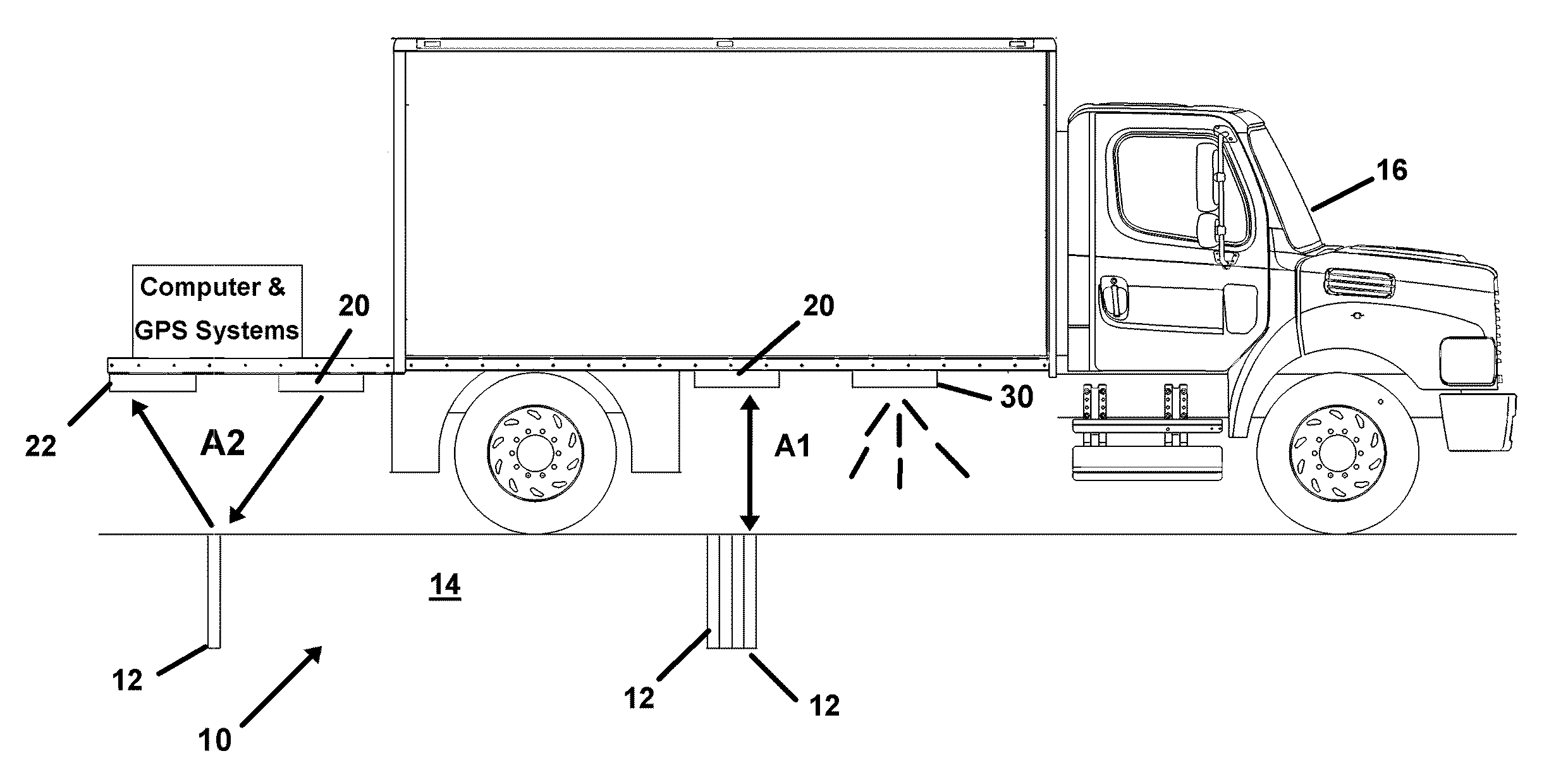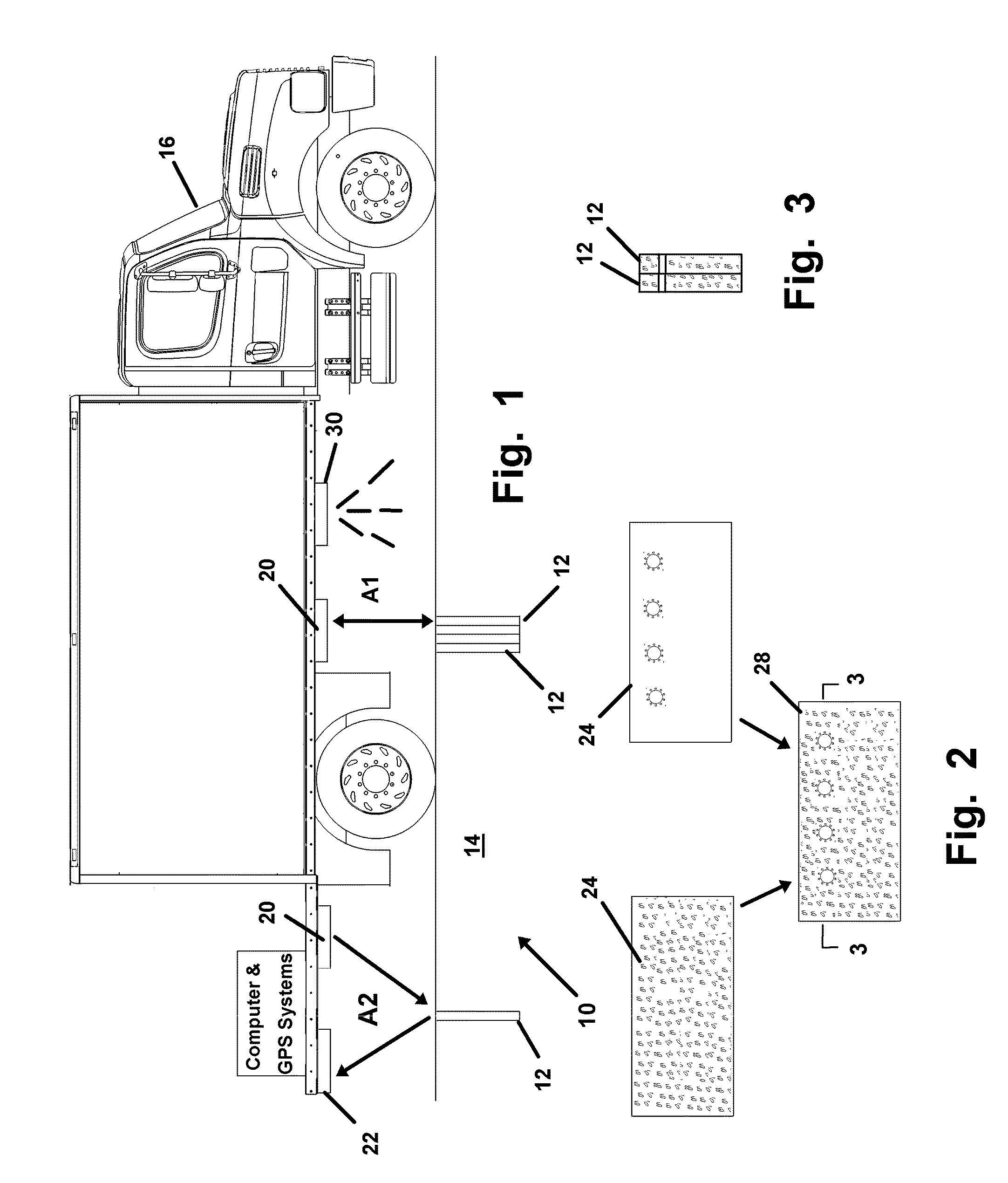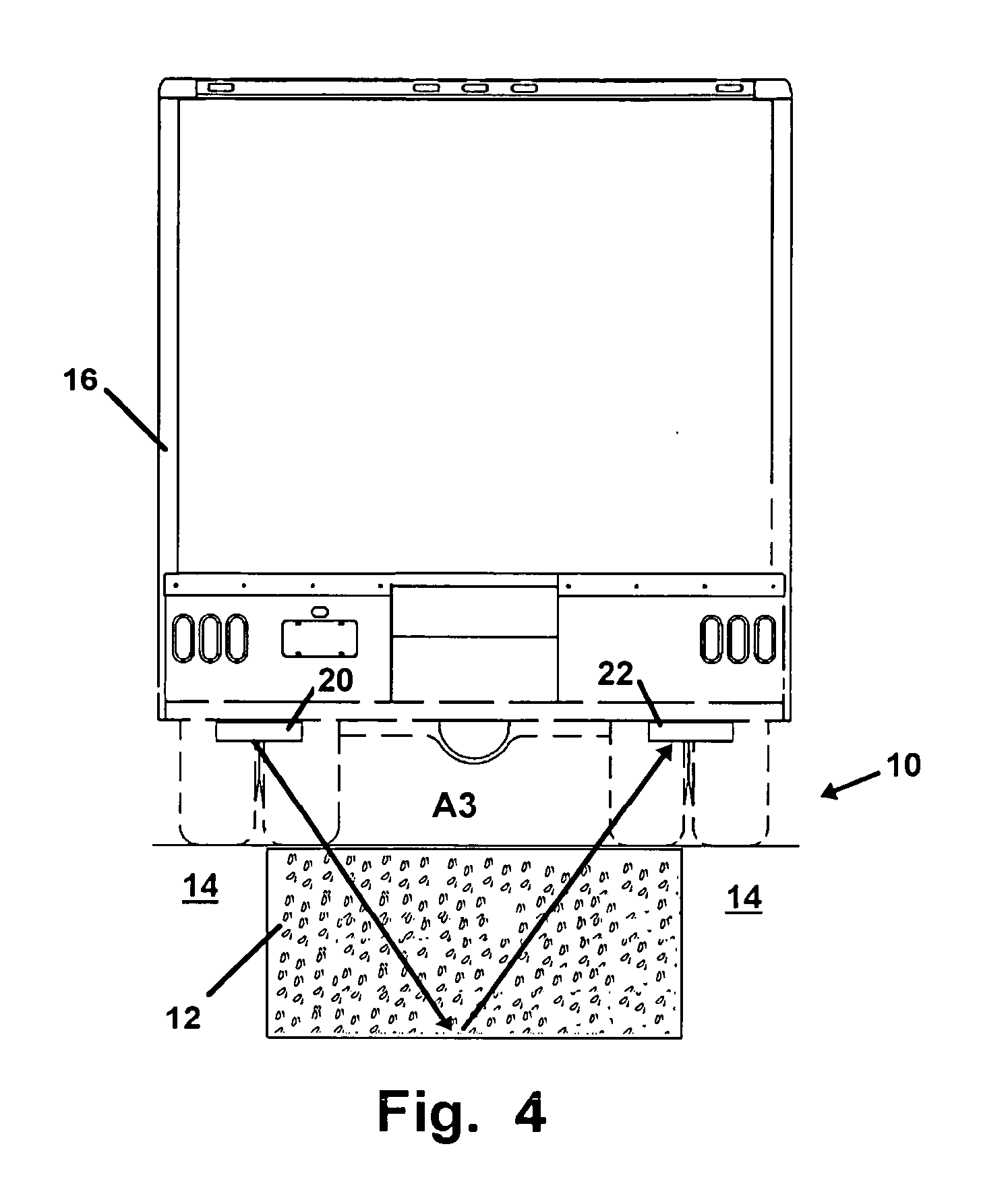Device and Method to Evaluate Condition of Concrete Roadways Employing a Radar-based Sensing and Data Acquisition System
a technology of data acquisition and concrete, applied in the direction of measurement devices, using reradiation, instruments, etc., can solve the problems of loss of many lives, constant oxidation of metals such as steel, employed in roadway reinforcement, etc., and achieve the effect of improving the rendering of specific materials and easy registration to positions
- Summary
- Abstract
- Description
- Claims
- Application Information
AI Technical Summary
Benefits of technology
Problems solved by technology
Method used
Image
Examples
Embodiment Construction
[0066]The disclosed device 10 and method will utilize a plurality of separate antenna arrays to capture data points from the substrate of the roadway underlying the driving surface. Thus, the disclosed device 10 and method produces a very high volume of radio frequency data points, which, in a manner similar to a digital camera, with a high number of pixels, produces a very high resolution image of individual sections 12 of the underlying roadbed 12.
[0067]As seen in FIG. 1, the device 10 employs multiple antenna arrays engaged in a vehicle 16 to transmit and receive pulsed RF signals to through the roadbed 14. Each array features a transmitting antenna 20 and receiving antenna 22 which using pulsed transmission may also be the same antenna depending on the angle of transmission desired.
[0068]RF transmissions may be at angles perpendicular to the roadbed 14 such as A1, or at angles to communicate through the section 12 as in A2 along the path of the vehicle 16 or traverse to the path...
PUM
 Login to View More
Login to View More Abstract
Description
Claims
Application Information
 Login to View More
Login to View More - R&D
- Intellectual Property
- Life Sciences
- Materials
- Tech Scout
- Unparalleled Data Quality
- Higher Quality Content
- 60% Fewer Hallucinations
Browse by: Latest US Patents, China's latest patents, Technical Efficacy Thesaurus, Application Domain, Technology Topic, Popular Technical Reports.
© 2025 PatSnap. All rights reserved.Legal|Privacy policy|Modern Slavery Act Transparency Statement|Sitemap|About US| Contact US: help@patsnap.com



